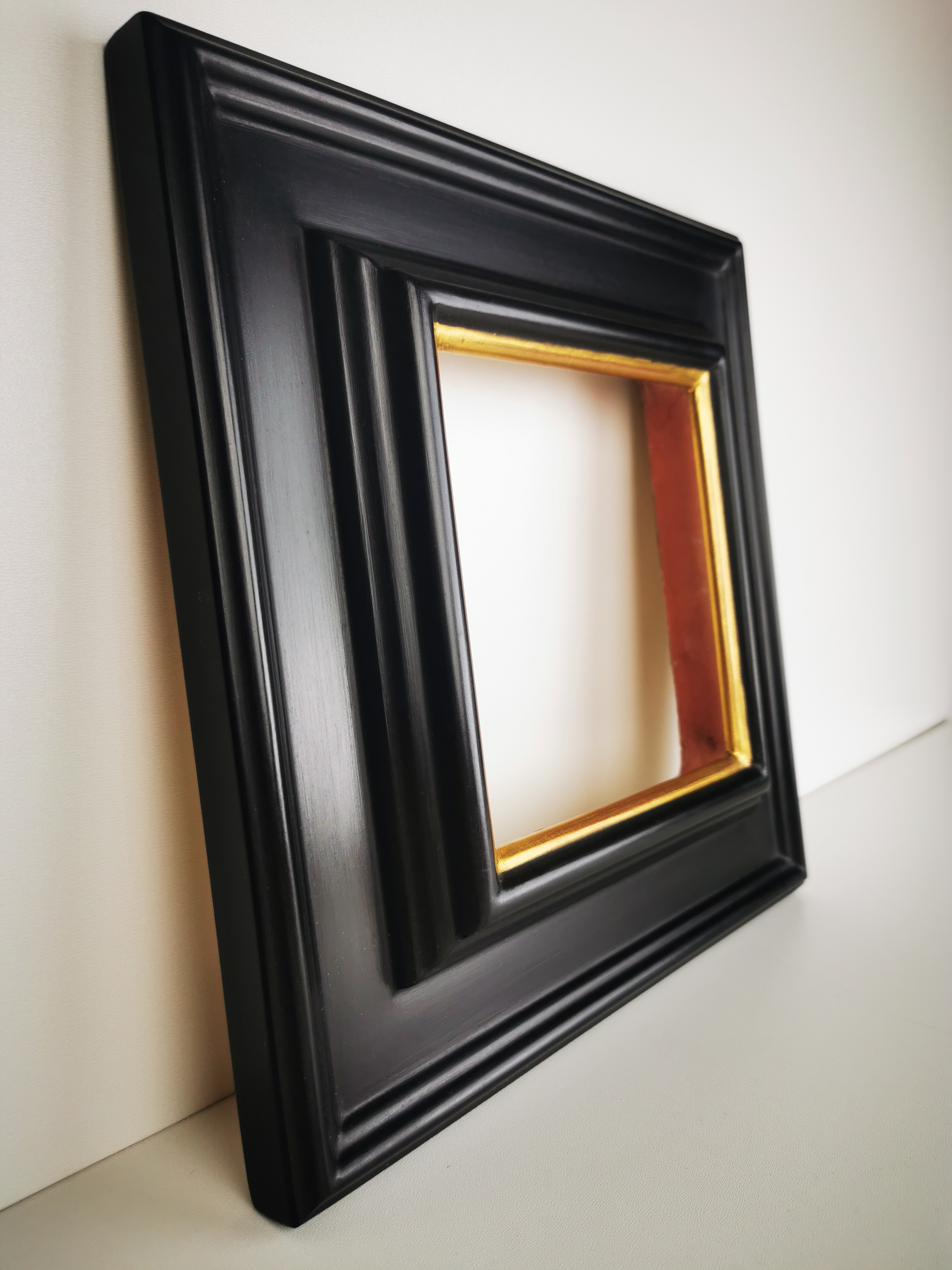
Dutch Frames – Timeless Elegance and Functionality in the Service of Art
Introduction
Dutch frames are a unique form of artwork presentation that has remained consistently popular among artists and collectors alike. They offer a rare combination of subtlety, classic design, and practical benefits, enhancing the expression and presence of a work of art. With their refined construction and restrained elegance, Dutch frames have been a favoured choice for centuries – especially for oil paintings, portraits, prints, and still lifes. Although their origins date back to the 17th century, today – thanks to artisans like myself – they are enjoying a revival, adapted to contemporary interiors and expectations.
Origins of Dutch Frames
This frame style emerged in 17th-century Holland during the Golden Age of Dutch painting. Also known as "canal frames" or "reverse profile frames," they are distinguished by their sloping profile – angling outward from the painting. This design reduces light reflection and visually brings the artwork to the forefront. It aligned with Protestant sensibilities of modesty, ensuring the frame supported the artwork rather than overshadowing it.
Back then, Dutch frames were primarily made from wood, finished with dark stains, black lacquers, and discreet gilding – typically on the inner edge. This appearance harmonised beautifully with the subdued palettes of masters like Rembrandt, Vermeer, and de Hooch.
Use Then and Now
In the past, Dutch frames were the natural choice for easel paintings, especially those in darker, calmer tones. They suited the interiors of bourgeois homes and sacred spaces.
Today, Dutch frames are experiencing a renaissance. They pair seamlessly with both classic and modern interiors – from rustic rooms to minimalist galleries. They’re perfect for oil paintings, graphics, photography, and contemporary art. Their greatest strength lies in drawing attention to the artwork, not stealing the spotlight.
Defining Features of Dutch Frames
Key elements include:
- Reverse profile – The frame's moulding slopes outward, guiding the viewer’s eye into the painting.
- Generous proportions – Frames can be up to 10 cm wide, but their design prevents them from appearing overpowering.
- Minimalist aesthetic – Typically lacking ornate decorations, often with a fine gilded inner edge.
- Rich colouring – Dark, deep tones dominate, often complemented by subtle metallic highlights.
My Approach to Dutch Framing
In my workshop, I’ve been crafting Dutch-style frames for years using traditional woodworking and gilding techniques. Each piece is handmade, balancing simplicity with craftsmanship.
I create frames in satin black with soft gilding or fully gilded options, combining minimalist form with a luxurious finish. I work with various veneers, such as American walnut or decorative burl, to achieve unique character in each frame. Interiors are lined with red or black bole before applying 22-carat gold leaf by hand.
Each frame is bespoke – custom-built to fit the dimensions, palette, and atmosphere of the artwork. These frames aren’t merely accessories – they become integral to the artwork and its environment.
Handcrafted Value in an Age of Mass Production
In an era of machine-made frames, a hand-crafted Dutch frame holds special significance. Every step – from cutting wood to laying gold – demands precision and artistry. No two frames are identical. Each carries the marks of personal labour, serving as a true extension of the artist’s work.
A Collector’s Conscious Choice
Collectors, conservators, and curators value Dutch frames for their timeless appeal, resilience, and resistance to fleeting trends. Many contemporary works gain depth and dignity through such classic, refined presentation. Often, the frame is what allows the painting to fully “speak.”
What Are Dutch Picture Frames?
Elegant, luxurious frames rooted in the 17th-century Dutch painting tradition. Symbolic of quality craftsmanship and artistic harmony, they enhance both classical and contemporary pieces.
Materials and Techniques
Crafted using:
- Deep staining for rich colour and visible grain
- Ornate carving, often with botanical motifs
- Gold or silver leaf gilding
- Lacquering and patination for an aged finish
The use of solid woods like oak, cherry, and walnut ensures both beauty and longevity.
Baroque and Renaissance Influence
Baroque: rich embellishments and drama
Renaissance: symmetry and classic proportion
These historical styles lend gravitas and elegance to the frames, enhancing artworks old and new.
Why Museums Choose Dutch Frames
- Excellent protection for artwork
- Visual enhancement of painting details
- Style fidelity to historical periods
- Long-lasting and suitable for restoration
Famous institutions such as the Rijksmuseum and Mauritshuis frame masterpieces by Rembrandt and Vermeer in these iconic frames.
How to Choose a Dutch Frame for an Oil Painting
Key considerations:
- Artwork size – Larger works suit wider profiles
- Colour palette – Dark frames with gilding highlight warm tones
- Art style – Classic frames for traditional paintings, sleeker styles for modern works